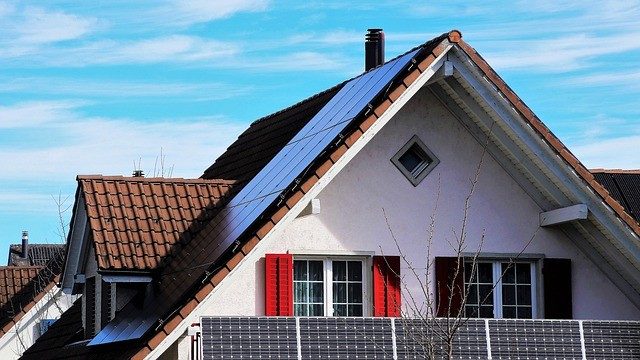
Energy generation and consumption is rapidly transforming into a decentralized, decarbonized, and digitized model due to a number of market forces. The declining costs of solar energy systems, as well as the increasing price of energy from the grid has led to grid parity. This has caused PV proliferation to accelerate to such an extent that in the past five years alone, PV installed capacity has increased by 300%. Simultaneously, the EV market is also on the rise and is expected to reach the electrification tipping point by 2030. This is due to support from governments trying to limit the effects of climate change, thus leading to automotive manufactures transitioning their fleets from standard petrol- and diesel-powered cars to EVs. As a result of the acceleration of both of these markets, EV charging has created demand patterns causing an even steeper and faster ramp-up in the evenings than the PV duck curve. , This is causing the grid’s balancing act to be increasingly complex. In order to support this new energy dynamic, advanced management software is required to ensure grid stabilization and to unlock the value of these energy resources.
Demand flexibility is a crucial element for a smart grid to leverage in order to maintain stability. Fortunately, the potential for behind-the-meter flexibility in the residential sector is particularly promising. A report by Wood Mackenzie found that there is currently ~47 GW of demand-side flexibility in the U.S residential sector alone, and it is forecasted to reach ~88 GW by 2023. This growth in demand flexibility could be in part due to PV incentive structures evolving towards self-consumption as it incentivizes system owners to consume more of the energy they produce. This is leading to consumers installing EV chargers, solar batteries, and other smart energy devices to better leverage the production of their PV systems. However, in order for these distributed energy resources to truly offer any value in terms of self-consumption and grid stability, they need to be smartly managed both locally and at the macro level.
Key to managing these new flexible energy resources is the smart inverter, which acts as an energy manager for PV, storage, EV charging, and other smart appliances, in addition to grid interaction. At the local energy system level, the inverter can be programmed to maximize self-consumption, such as storing excess solar energy in a battery for later use or shifting consumption to match PV production. While at the grid level, the inverter can manage these underlying demand-flexible resources to support grid stability, such as discharging batteries into the grid to meet demand or pausing EV charging to decrease demand. Due to the inverter’s location as an interface between the local energy system and the grid, it also plays a strategic role in the deployment of virtual power plants (VPPs). VPPs pool PVs, batteries, and EV chargers in the cloud to instantly and automatically modify generation or consumption in order to stabilize grid frequency and voltage and more efficiently meet demand. Within the framework of VPPs, the inverter is responsible for disaggregating commands to underlying distributed energy resources (DERs). VPPs support three scenarios: meeting supply shortages, hedging pricing volatility, and maintaining grid stability. An example of a VPP meeting a supply shortage would be that in an area in which supply cannot meet demand, a utility is able to preschedule battery charging so that they can be discharged when needed, meaning substations do not surpass expected capacity.
One of the main reasons that VPPs are a promising new addition to the energy ecosystem is that they provide value to all stakeholders. System owners who participate in VPPs by allowing the utility access to their batteries or EV chargers, enjoy increased ROI for their systems either from upfront subsidies for hardware or from monthly rebate programs which grant the utility access to batteries and EV chargers. Energy suppliers also receive value with increased protection from price peaks, due to capped pricing that hedges against price volatility. This has the potential to save energy suppliers $30-80/kW per year. Lastly, Distribution Network Operators (DNOs) can defer building costly (~$10-20M) and often underutilized network infrastructure by leveraging pooled energy in VPPs to instantly overcome local supply shortages., By providing the flexibility to gradually increase storage capacity to meet a growing demand, VPPs eliminate the need for DNOs to purchase costly voltage regulator equipment, saving thousands of dollars per feeder.
Demonstrating their value and real-world capabilities, VPPs are already being deployed across the globe. For instance, SolarEdge has already worked with various utilities to deploy VPPs in different countries, such as the United States and Australia. In California, when a utility required load shedding for an ISO-triggered demand response event, SolarEdge provided VPP access to a fleet of residential storage systems. During this event, which lasted throughout three consecutive days, the VPP gave commands to all the connected storage systems in the area to charge batteries from the PV. Afterwards during a four-hour period each day, the batteries were discharged at a desired power and duration in order to provide power to the grid.
Another example of a VPP in action is when a Massachusetts’ utility required load shedding during three hours of peak demand. SolarEdge provided VPP access to a fleet of residential storage systems. During the load-shedding event, the batteries provided site-level energy supply with no grid export in order to match site load, meaning the homes were temporarily operating off-grid during this time. These applications show that as more PV systems and batteries are installed and help create a decentralized model of energy distribution, VPPs gain more access to more energy and thus their potential to support grid stability increases. However, the implementation of VPPs is only the first step for the smart grid. Combined with the power of artificial intelligence, machine learning, and data analytics, the technology behind VPPs will ultimately further evolve to make insight-driven decisions for optimizing energy allocation.